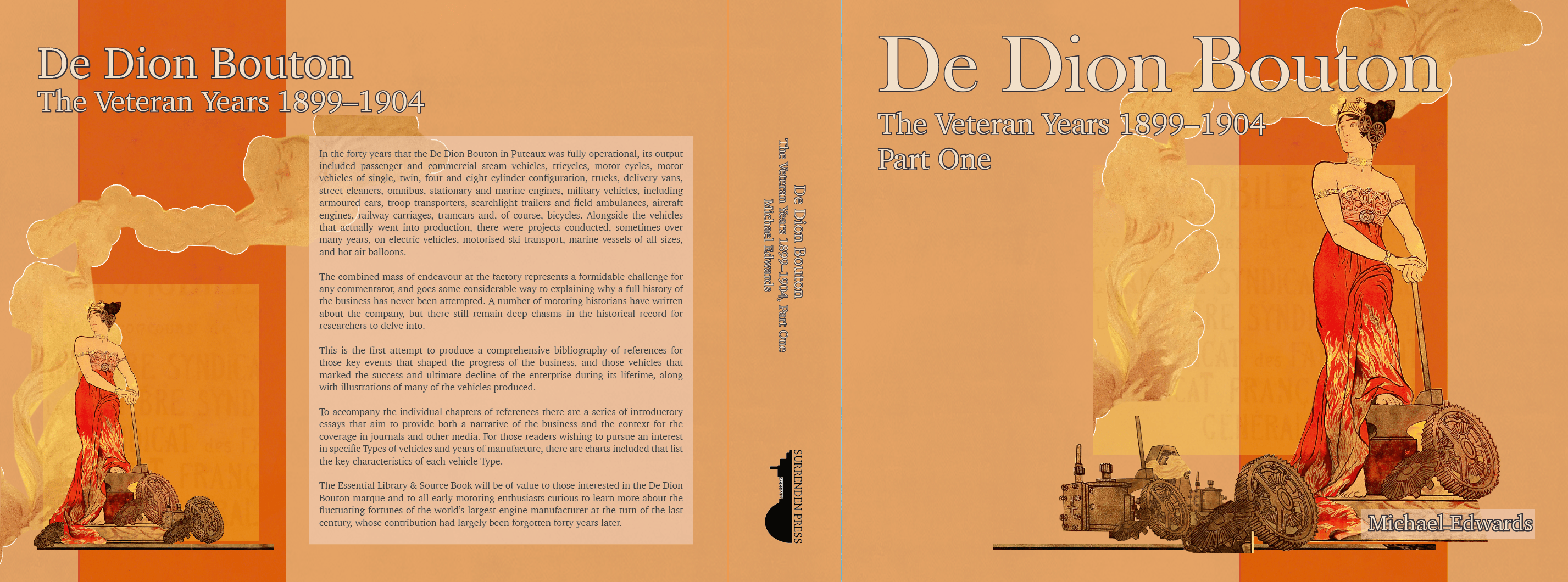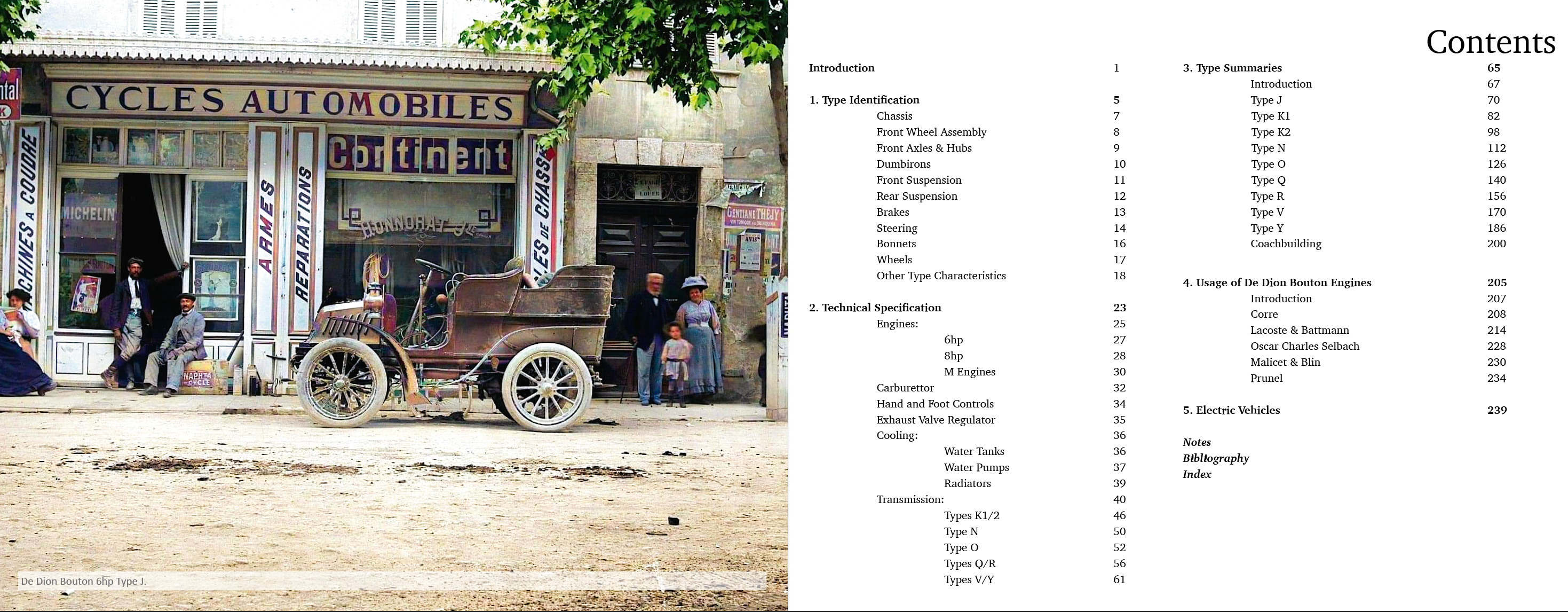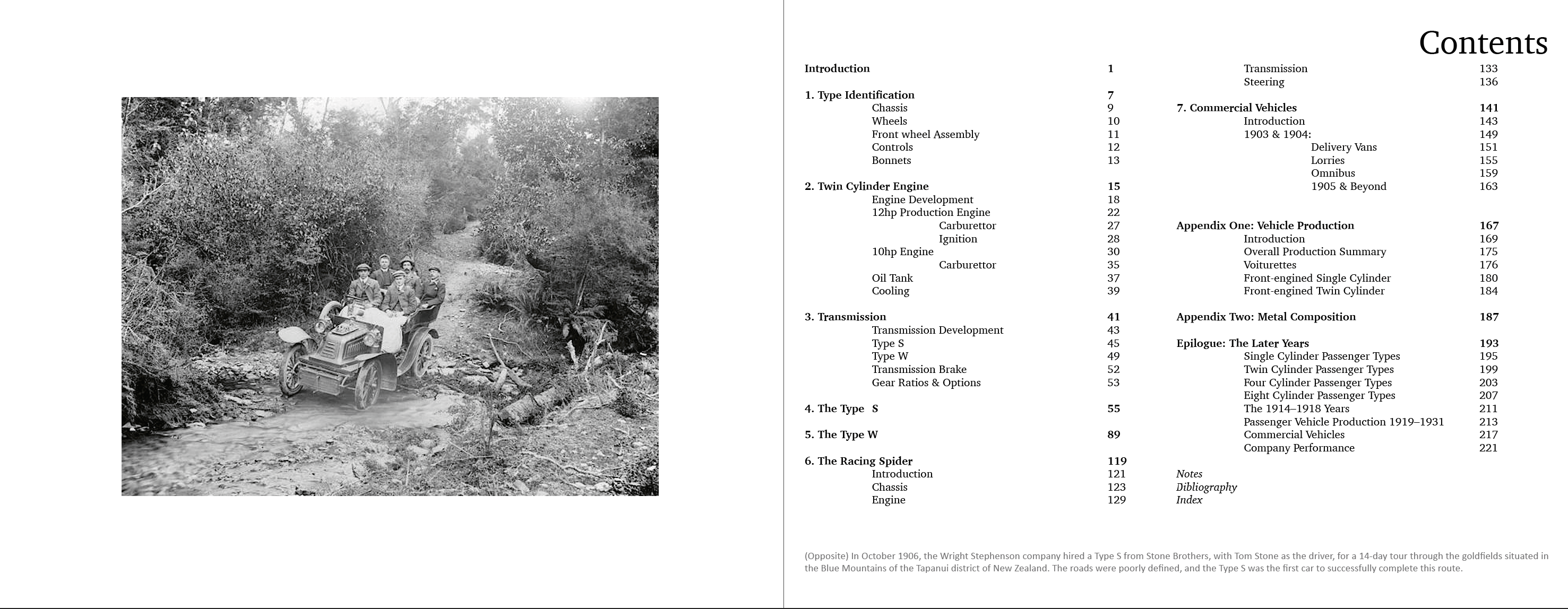De Dion Bouton: The Veteran Years, 1899-1904
)
Michael Edwards details the history of his major new three volume work: De Dion Bouton, The Veteran Years, 1899-1904
There is a well-trodden path taken by those acquiring old vehicles, of filling in the knowledge gaps left by a previous owner. Establishing a reliable provenance can be both satisfying and financially rewarding This can be problematic for those machines that are half a century old, but when the motor car in question left the factory 125 years earlier, the challenge is altogether more demanding. Over the decades, registration documents and elements of coachwork have helped to light fires, pieces of rusty metal, wheels and engines have been re-purposed, brass lamps and horns have made attractive house ornaments, while the heavier, rather more unmanageable components have been abandoned in orchards, barns and cow sheds. Entire chassis had sometimes been re-used as farmyard gates and sections of fencing, or foundations for driveways.
The rise of the veteran car movement
The veteran car movement emerged in the late 1920s as it was becoming apparent that of the many thousands of motor vehicles manufactured in the early years of the motor industry, relatively few had survived, and the life expectancy of the survivors was far from guaranteed. By the mid-1930s groups of enthusiasts were scouring the countryside and city garages for abandoned motor cars that could form the basis of a restoration project. Ten pounds in cash (or less) was generally all that was required to secure a rusty heap.
Hot on the heels of acquiring a four-wheeled trove of treasure was the need to access information that would help to identify what the vehicle was and its year of production, and to understand the specification of missing components. In this pre-Google age, local knowledge, word of mouth, intuition, and a general approach of ‘making do’, are what usually returned a motor vehicle successfully to the road. Motoring magazines, book publications, and car club membership also played a significant part too in the dissemination of knowledge.
The need for accurate information
Over the last fifty years, the substantial rise in veteran car values and the ambition of car owners to have their steeds as reliable performers on the road has generated rather more interest in originality of specification and higher quality of maintenance. It is no longer enough to know that a vehicle is a Renault, Darracq, or a De Dion Bouton. Questions on Type or model, original engine capacity, and chassis wheelbase, and many other characteristics need to be known. While it can be justifiably said that the management teams of these factories at the turn of the last century demonstrated formidable competence in engineering, their foresight in comprehending the needs of enthusiasts 120 years hence was, not surprisingly, lacking to a significant degree. In terms of the calendarization of serial numbers of chassis, engines and transmissions, actual dates when new models became available, the logic behind using certain components in some models not others, and so much more, there are knowledge chasms that no surviving records can resolve.
Where there is knowledge, it can sometimes be fragmentary, unearthed perhaps by individuals who have never had any interest in publishing it, but who have made portions of it available to other known contacts. Or made available in an inaccessible language, or in an obscure journal that possibly ran for no more a few years. This is a torment for an enthusiastic veteran car owner but, at the same time, for an historian it creates the possibility to draw together a multitude of disparate strands of information, in the anticipation of creating a coherent picture of model development over a period of time.
When I acquired a 1902 Type O De Dion Bouton rear entrance tonneau in 1998 (bought for £12 by a relation in 1931), it rapidly became apparent that there was very limited information available on the model, and much of what was in the public domain had been replicated numerous times without its validity being questioned. How many De Dion Bouton examples like mine existed? How many cars of the same marque were resident in the UK? Which Types were most numerous, and what were their individual characteristics? Were the specific batches of serial numbers for each Type of car that could help identify and date a particular vehicle?
A 20-year project
Logic dictated that it might be worthwhile to build a register of De Dion Bouton motor cars. It was started 20 years ago, and now includes more than 600 entries from around the world. Every opportunity was taken to photograph and inspect motor cars, gather articles from early journals, mainly from the UK and France and build up a network of owners around the world. What do you do with a mass of information that is invariably incomplete and contradictory? The answer is to publish it warts and all, which was what I proceeded to do in late 2016, in an 80-page book, called De Dion Bouton: An Illustrated Guide to Type and Specification, 1899-1904. The self-published volume sold out in 12 weeks which re-inforced the idea that it was worth doing, but equally important it attracted a torrent of comment, information, fresh data and perspectives from owners of cars that helped me understand that there was further to travel on this journey of really understanding the marque.
Eight years later, a second edition has been produced with an amended title: De Dion Bouton, The Veteran Years, 1899-1904, which reflects a more detailed presentation of the company, the driving characters behind it, a clear understanding of the production by different model and the technical distinctions that were introduced. Since the first edition the book has been extended to 840 pages, with 1700 photographs, scores of previously unpublished images, and specially commissioned chassis drawings and tabulated pages of information. Readers of historical books on technical subjects expect the author to provide conclusions, but they also demand to see the data and details that the findings are based on.
There is satisfaction to be gained from completing a lengthy three-volume work that has taken more than twenty years to finally emerge in the current format, but it is matched with the joy of having met dozens of other car enthusiasts from around the world who have shared their discoveries, gently tutored me on the fine details of the more technical elements, and have extended the hand of friendship that is one of the enduring traits of the veteran car fraternity.
SYNOPSIS
De Dion Bouton – The Veteran Years, 1899-1904
Part One (304 pages): Company History including details of the individuals who provided the impetus for the early development of the De Dion Bouton company and its subsequent success; Tours, Trials and Racing in France and Great Britain including the Paris-Madrid race and 1904 Tour of Southern Britain; Voiturette Technical Specification, Voiturette Development, Forward Control Vehicles, Licensing & Distribution, and Usage of De Dion Bouton Engines by other manufacturers.
Part Two (264 pages): Type Identification of the various front-engined single cylinder models; Technical Specifications with detailed chassis drawings and diagrams of engines and gearboxes, steering, cooling and brakes; Type Summaries of each model with contemporary and historic images; Usage of De Dion Bouton engines with surveys of Corre, Lacoste & Battmann, Malicet & Blin and Prunel; Electric vehicle designs that never went into production.
Part Three (244 pages) includes comprehensive illustrated coverage of the Twin Cylinder Engine, and Transmission, detailed illustrations of extant examples of The Type S and the Type W and their technical characteristics; original drawings of The Racing Spider used in competition by Charles Jarrott and Jack Stocks; the production of Commercial Vehicles; an essay on Vehicle Production for all vehicle Types in 1899-190, and an Epilogue covering The Later Years of the De Dion Bouton company, through the war years to its eventual cessation of production in the early 1930s.
Within the 800 carefully designed pages there are more than 1,000 photographs and drawings, a comprehensive set of footnotes and a bibliography that together provide a detailed narrative of the De Dion Bouton business at the turn of the last century. An epilogue charts the pathway of the company through the war years to its eventual cessation of production in the early 1930s.
Priced at £175, De Dion Bouton: The Veteran Years, 1899-1904 is available to order from Surrenden Press.















.resize-500x189.png)







